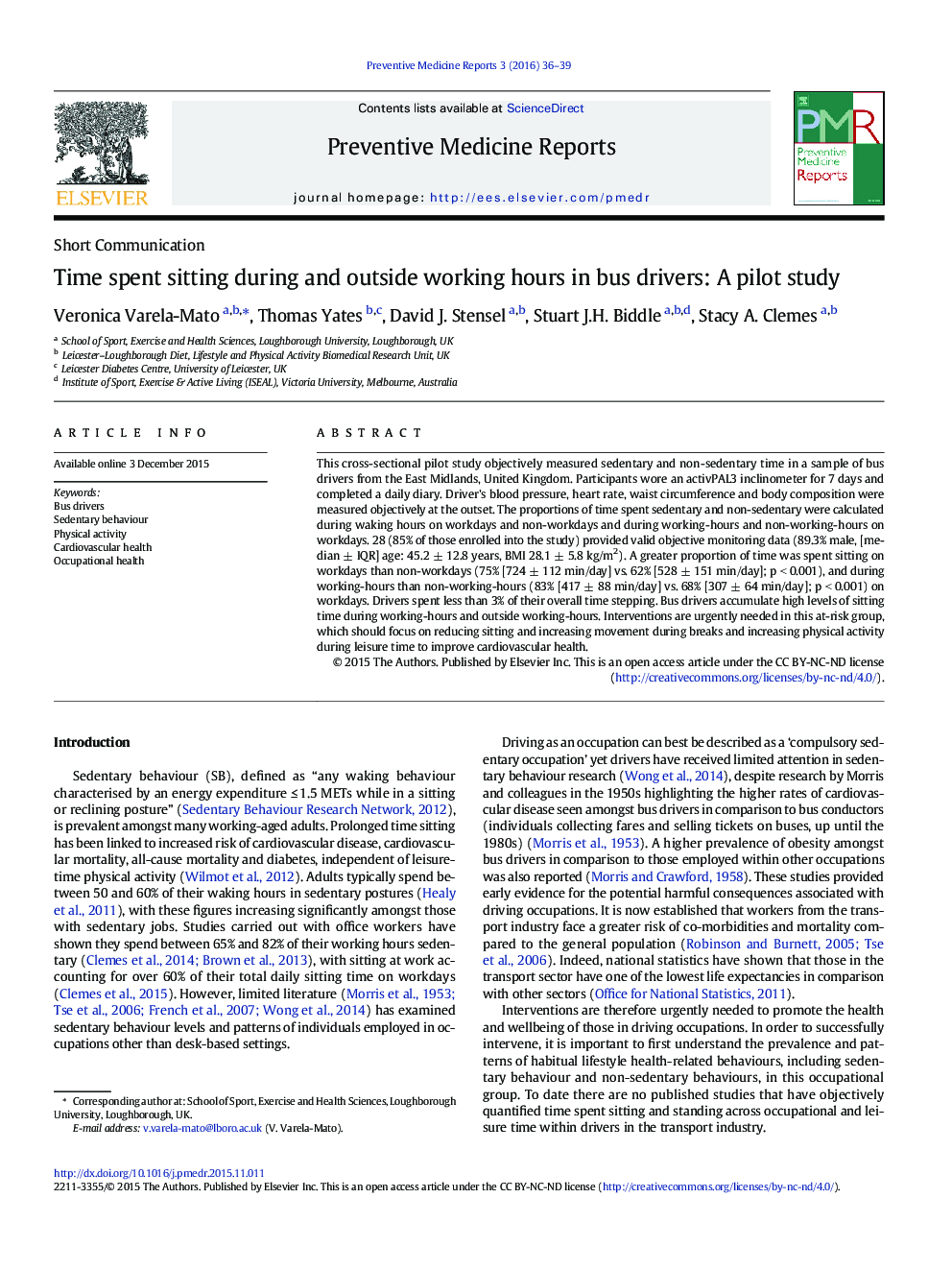| Article ID | Journal | Published Year | Pages | File Type |
|---|---|---|---|---|
| 4202367 | Preventive Medicine Reports | 2016 | 4 Pages |
•85% of drivers adhered to the activPAL protocol and provided sufficient data.•Bus drivers spent 83% of their time at work and 68% outside of work sitting.•Only 5% and 8% of the wear time on workdays and non-workdays was spent stepping.•BMI, fat %, waist circumference and blood pressure were classified as unhealthy.•Bus drivers are a priority group, health research and interventions are needed.
This cross-sectional pilot study objectively measured sedentary and non-sedentary time in a sample of bus drivers from the East Midlands, United Kingdom. Participants wore an activPAL3 inclinometer for 7 days and completed a daily diary. Driver's blood pressure, heart rate, waist circumference and body composition were measured objectively at the outset. The proportions of time spent sedentary and non-sedentary were calculated during waking hours on workdays and non-workdays and during working-hours and non-working-hours on workdays. 28 (85% of those enrolled into the study) provided valid objective monitoring data (89.3% male, [median ± IQR] age: 45.2 ± 12.8 years, BMI 28.1 ± 5.8 kg/m2). A greater proportion of time was spent sitting on workdays than non-workdays (75% [724 ± 112 min/day] vs. 62% [528 ± 151 min/day]; p < 0.001), and during working-hours than non-working-hours (83% [417 ± 88 min/day] vs. 68% [307 ± 64 min/day]; p < 0.001) on workdays. Drivers spent less than 3% of their overall time stepping. Bus drivers accumulate high levels of sitting time during working-hours and outside working-hours. Interventions are urgently needed in this at-risk group, which should focus on reducing sitting and increasing movement during breaks and increasing physical activity during leisure time to improve cardiovascular health.
